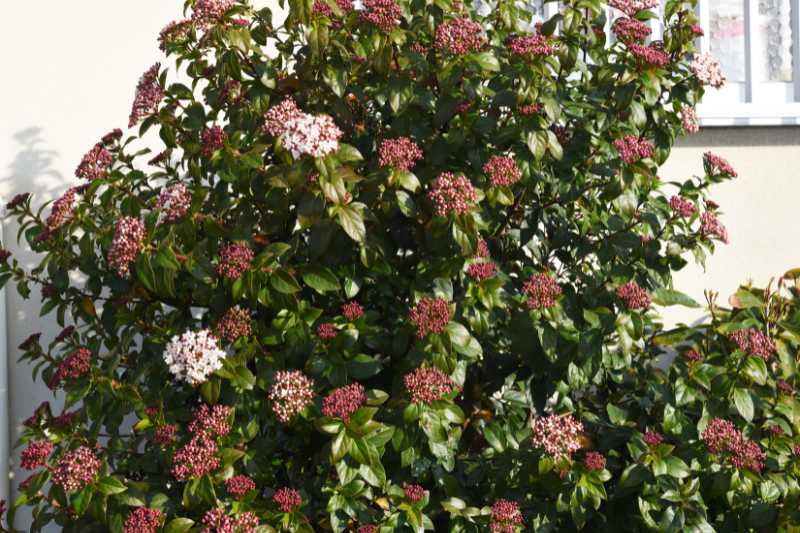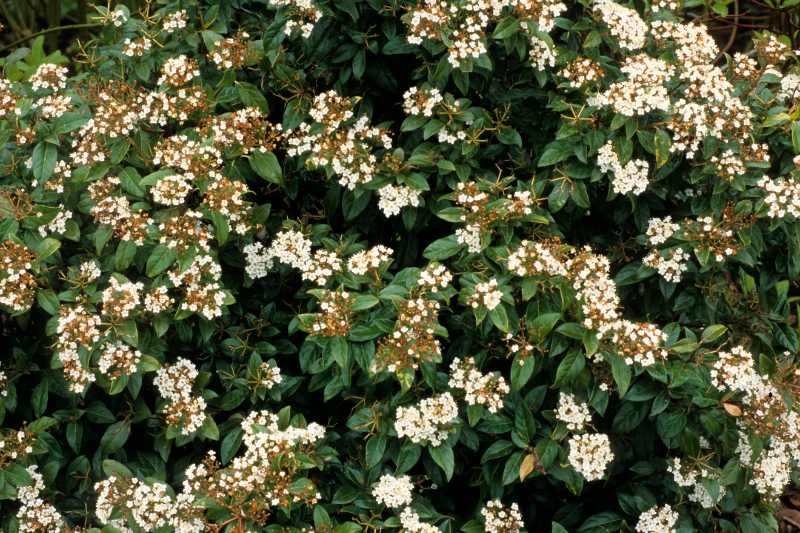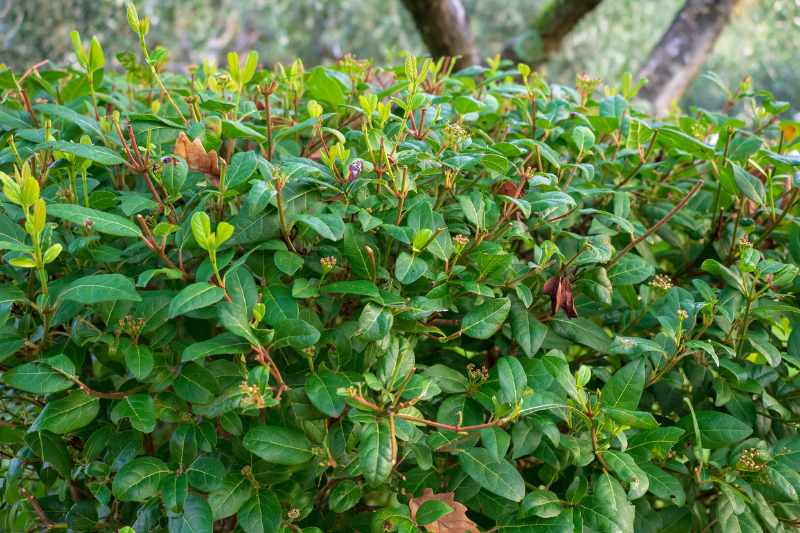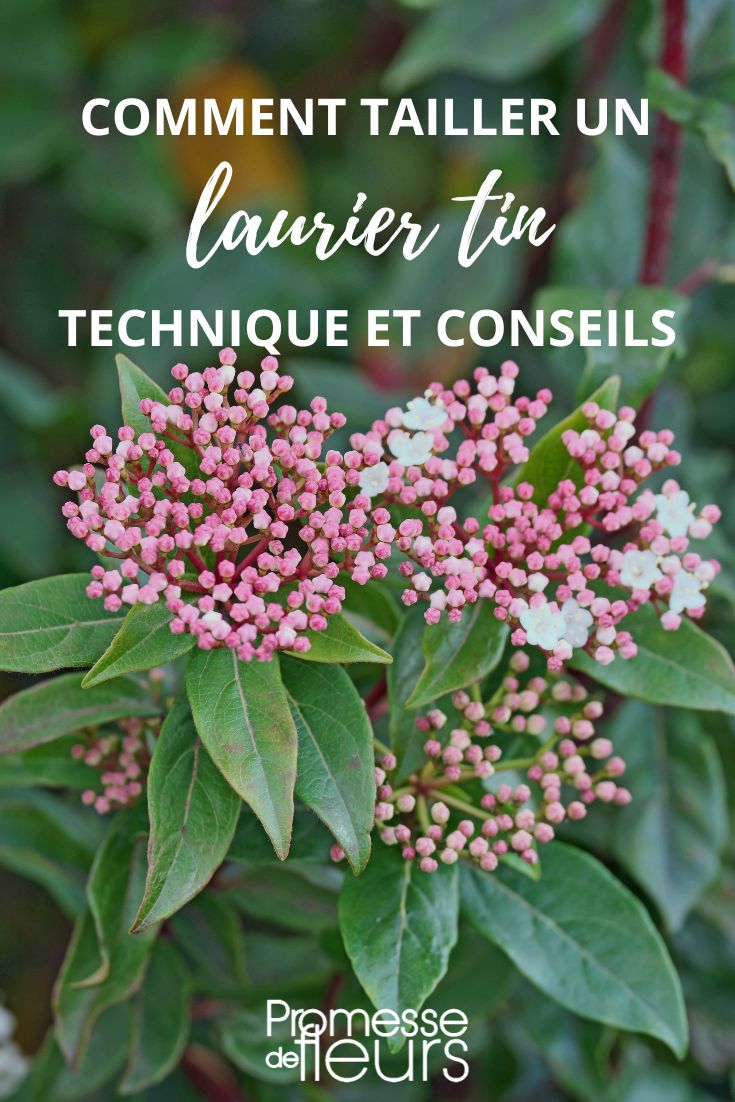The laurustinus (Viburnum tinus) is a species of Viburnum prized for its winter flowering and evergreen foliage. It forms a dense, ramified bush that can reach 2 to 3 metres in height if left unpruned. It retains its glossy foliage, which will shield against prying eyes during the colder months. Of all the Viburnums, the Laurustinus is undoubtedly the least demanding. This bush is easy to maintain, resistant to pollution and sea spray, tolerating poor and dry soils as well as competition from the roots of older trees. It is essential in informal hedges, at the back of borders, or even in containers on the terrace for smaller varieties. While pruning is not obligatory, it helps maintain a harmonious shape and control its growth.
Discover when and how to prune laurustinus easily with our illustrated tutorial!
Why prune laurustinus?
Laurustinus can do without pruning. However, pruning helps control its growth if it becomes too large when planted in a hedge or container, for example. This versatile bush fits well in both informal hedges and neatly trimmed ones and tolerates hard pruning well. It may also need pruning to maintain a nice, dense habit, balance the branching, optimise flowering, and prevent it from becoming bare at the base.
When to prune laurustinus?
You can prune in spring, in March-April after flowering. You can prune a second time in June if needed. Annual pruning is not necessary. You can simply cut it back hard every 2 to 3 years to rejuvenate it. We recommend pruning only when necessary, especially if you want to enjoy its decorative autumn fruiting.
How to prune laurustinus?
Tools needed:
- A hedge trimmer
- A secateurs
- A lopper
Our advice: always use sharp pruning tools to make clean cuts and disinfect them with methylated spirits to prevent the spread of diseases between plants.
Maintenance pruning
- Always cut just above a branching point
- With secateurs, start by removing all old wood, diseased branches, and shoots that unbalance the shape or become bare at the base
- Cut back flowering shoots by half to encourage branching: leave some to enjoy the fruits!
- For hard pruning: use a lopper to cut back old branches to the stump.
Pruning a standard laurustinus
Laurustinus tolerates repeated pruning well and can be used in topiary to give it structure. It is possible to prune it into a standard form for an elegant habit. It is best to choose a laurustinus variety that will not exceed 2m in height and offers a highly ramified crown at maturity.
- From planting, use secateurs to remove lateral shoots on the lower third of the bush and all suckers from the trunk
- Prune just above an eye
- Each year, cut back crossing branches to maintain a single stem
- Annually remove dead wood and cut back the top shoots by half to maintain a nice, regular shape
- Pruning should be regular. Each spring, rebalance the crown.
To go further
→ Also discover our guide: Growing a Viburnum in a pot






































Comments